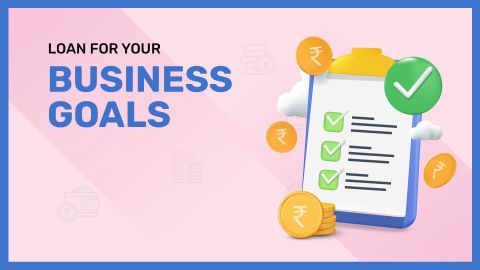Steps in the business loan application procedure
The process of applying for a business loan involves multiple steps that require attention to detail and proper planning. Businesses need to take a systematic approach to ensure they meet all the requirements set by financial institutions. The first step in the process is assessing your business needs and determining the type of loan required. Understanding your creditworthiness is another vital aspect, as it helps lenders assess your ability to repay the loan. Additionally, having a solid business plan and preparing essential documents can speed up the process. Once you have gathered everything, it is essential to research and compare lenders to ensure you are getting the best terms and conditions. Lastly, businesses can explore collateral-free loans if they are unable to provide security. This guide outlines the process in detail to help businesses successfully navigate the business loan application journey.
1. Assess your needs and loan type
The first step in applying for a business loan is determining the specific financial needs of your business. Are you looking to expand operations, purchase inventory, or cover short-term cash flow gaps? Knowing this will help you identify which type of loan suits your requirements. For example, working capital loans are designed to help businesses cover day-to-day operational expenses. These loans are beneficial for maintaining cash flow and ensuring smooth operations. Alternatively, businesses looking for growth opportunities may need equipment financing or long-term loans to fund new projects or large purchases. It is important to evaluate your specific needs carefully, as the wrong loan type could result in higher interest rates or inadequate loan amounts. Additionally, businesses in the MSME sector may have different loan options that cater specifically to their needs. Understanding your business's financial situation and goals will guide you toward selecting the right loan for success.2. Evaluate your creditworthiness
Before applying for a business loan, lenders will assess your creditworthiness to gauge the likelihood that you will be able to repay the loan. In India, creditworthiness is evaluated using a credit score, financial history, and the ability to generate consistent revenue. A higher credit score indicates a lower risk for lenders, making it easier to secure loans with favourable terms. To improve your creditworthiness, ensure timely repayment of existing loans, minimise outstanding debts, and maintain accurate financial records. Business owners should also check their credit reports regularly to identify and resolve any discrepancies. In some cases, lenders may require additional security or collateral if your creditworthiness is deemed insufficient. Thus, maintaining a strong credit profile is crucial in securing the loan with the best terms. Financial institutions may also request guarantees or personal collateral, depending on the type and amount of loan being applied for.
3. Develop a solid business plan
A well-developed business plan is a critical element of the business loan application process. Lenders look for clear and comprehensive plans that demonstrate how the borrowed capital will be used and how the business intends to generate revenue. Your business plan should include detailed financial projections, an analysis of market conditions, and a clear outline of business objectives. A solid plan provides lenders with confidence that your business is prepared to repay the loan within the specified time. Key aspects of the plan should include a thorough analysis of the target market, competitive landscape, and operational plans for scaling the business. Moreover, the plan should show realistic and achievable milestones, backed by data and research. Lenders are more likely to approve loans for businesses that present a structured approach to growth and profitability. A detailed business plan acts as a guide, both for securing the loan and for the business’s future success.4. Get essential documents ready
To successfully apply for a business loan, preparing the required documents is essential. These documents help lenders assess your business's financial health and ensure you meet the eligibility criteria. Here is a breakdown of the key documents you will need:
- Proof of identity – To verify the business owner and key stakeholders
- Certificate of incorporation – Validates the business’s legal status
- Tax returns – Helps lenders assess your business’s income and tax history
- Financial statements – Including income statements, balance sheets, and profit and loss statements to evaluate the business’s financial health
- Cash flow statement – To show how well the business manages its cash flow and debt obligations
- Credit history report – To assess creditworthiness
- Bank statements – To validate business transactions and revenue streams
5. Research potential lenders
Once you have your documents in order, the next step is to research potential lenders. India offers a wide range of lending institutions, including banks, NBFCs (Non-Banking Financial Companies), and digital lenders. Each lender may have different eligibility criteria, interest rates, and loan terms. It is important to compare these aspects to find the best deal for your business. Look for lenders who offer loans that align with your business needs and provide favourable repayment terms. Additionally, ensure that the lenders have a clear and straightforward application process. Make sure to verify the lender’s reputation and check customer reviews to assess their trustworthiness and service quality. Some lenders may offer special deals or government-backed loan schemes, such as those for MSME businesses, which can be advantageous for entrepreneurs. Researching different lending options can significantly affect the overall cost and terms of the loan.




